Planting techniques of traditional Chinese Medicine Radix Astragali
Astragalus membranaceus is a famous traditional Chinese medicine and an important variety of foreign exchange earned from export in China. Its medicinal properties are peaceful, which can not only dispel evil, but also strengthen the body. It is a holy medicine for tonifying qi and solid surface, and is widely used in clinical configuration or daily health care. There are more than 200 kinds of proprietary Chinese medicines using Astragalus membranaceus as raw materials, including honey pills, water pills, capsules, tablets, decoction, wine products and so on. Shiquan Dabu pills, ginseng Guipi pills, Anshen Yangxin pills and Xiaoke pills are all tonifying pills with a long history.
Artificially cultivated Astragalus membranaceus has a yield of 200 Mu and 300 kg per mu, and its income can reach 3000MUR 4,500 yuan, which is more than twice that of conventional crops. At the same time, Astragalus membranaceus is born in desert area, which is resistant to drought and cold, has strong adaptability and stable yield, and is suitable for production in arid and semi-arid areas.
I. selection and preparation of land
Astragalus membranaceus is a deep-rooted plant, the cultivation land should choose deep soil layer, loose and fertile soil, good drainage, high dry, sunny, neutral or slightly acidic sandy soil above 600 meters above sea level, flat land and sloping land can be planted. Astragalus membranaceus should not be planted because of high groundwater level, high soil moisture, cohesive soil, low-lying clay or barren sand-gravel soil.
After selecting the land, we should carefully prepare the soil, deeply plough and improve the soil, and apply 2500-3000 kg of farm manure, 25-30 kg of superphosphate and 100kg of cake fertilizer. Practice has proved that deep ploughing can thicken the living soil layer, mature the soil, enhance the soil water storage and soil moisture conservation capacity, improve soil ventilation, promote the activity of microorganisms, accelerate the decomposition of organic nutrients, improve soil fertility, and be conducive to root growth. At the same time, deep ploughing combined with the application of organic fertilizer and soil fertility is an effective measure to capture the high yield of Radix Astragali.
Soil preparation in autumn is better, generally deep ploughing about 50 cm. After finishing, it is necessary to rake in time, remove weeds, gravel and residues in the field, and break the bumps so that the ground is flat and the soil is fine. Turn and rake twice before planting, leveling and raking fine after making a high border or ridge, the border is 25 cm high, 1.2 m wide, 40 cm wide, the border surface is in the shape of a tortoise, and drainage ditches are opened all around. High border cultivation not only thickens and loosens the tillage layer, has good drainage, but also absorbs heat and dissipates heat quickly, and has a large temperature difference between day and night, which is beneficial to the root development and nutrient accumulation of Astragalus membranaceus.
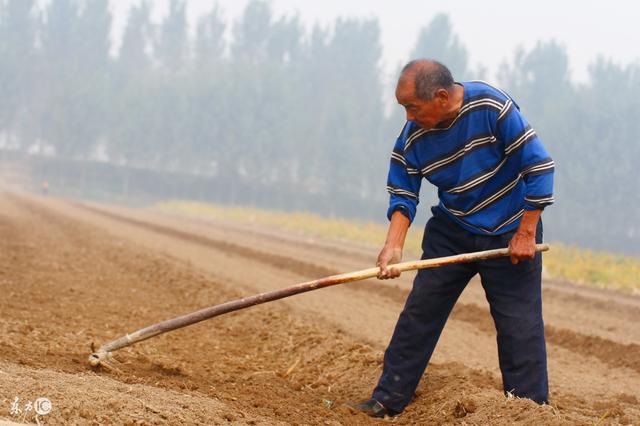
Second, reproductive technology
Astragalus membranaceus can be propagated by seed or root head, but the root head propagation of Astragalus membranaceus has no obvious main root, many lateral roots, thin roots, poor quality, and limited propagation materials, so it is generally not used in production. The following mainly introduces the methods of seed propagation of Radix Astragali.
1. Seed characteristics: astragalus seeds are hard and solid, and the hard seed rate is generally 40% 80%. The emergence rate is low after sowing. Seed treatment must be carried out before sowing to break the impermeability of seeds and improve the emergence rate of sowing.
2. Selected seeds: the seeds of Astragalus membranaceus sowing should be selected from plants that are more than three years old. It is required to select an excellent single plant with pure variety, no diseases and insect pests and strong growth as the mother plant. In autumn, the pods are sagging and yellow, and the seeds are harvested immediately when the seeds turn brown. After harvesting, the pods were threshed and dried and stored in the sun. Before sowing, the seeds were selected by water and air selection to remove impurities, shrunken grains and moth-eaten seeds, and full, brown and glossy seeds were selected for production.
3. Seed treatment: there are three methods, one of which can be chosen. (1) Water temperature change soaking seeds: several days before sowing, soak seeds in 40 ℃ warm water during the day, change cold water at night, treat them continuously for three days and nights, remove them and put them in a jar, cover them with a wet cloth and put them in a warm place to promote germination. 3MUE can germinate in 4 days and sow seeds. The seeds can also be rapidly stirred in boiling water for one minute, immediately poured into cold water, the water temperature is set to 40 ℃, soak for another 2 hours, pour out the water, cover the wet sack for 12 hours, and sow when the seed expands or the outer skin breaks. (2) Mechanical damage: mix 1 part of fine river sand and 2 parts of seeds evenly, put them on a medium-sized mill, spread them 3 mi 4 cm thick, and grind them until the seed coat burrs. After grinding, the seeds were screened, soaked in 20 ℃ warm water for one day, piled in a warm place, germinated in about 5 days, and then sowed. Be careful not to grind the seeds too much, otherwise the embryos will be injured, the seeds will be easily infected by germs, there are many rotten seeds after sowing, and the emergence rate is not high. (3) treatment: for mature and hard seeds, soak them in 70 / 80% of the solution for 5 minutes, rinse them in running water for half an hour, or rinse the seeds with clean water for many times, then sow the seeds after a little dry, and the germination rate can reach more than 90%.
4. Sowing: sowing should grab soil moisture and sow seeds. If the soil moisture is not good, water should be watered well.
(1) sowing period: Radix Astragali can be sown in spring, summer and autumn. According to the growth and development characteristics of Astragalus membranaceus, spring sowing is carried out before and after "Qingming Festival", no later than "Grain Rain", keep the soil moist, and seedlings can emerge in about 15 days; summer sowing is carried out from June to July, and seedlings can emerge 8 days after sowing; autumn sowing is generally carried out before and after "White Dew". The sowing time is different in different climatic conditions, so it should be mastered flexibly. For example, if the temperature is high in the south, autumn sowing in September and emergence before winter; in the north, the temperature is low, the resistance of seedlings is poor, and they are vulnerable to freezing injury. Autumn sowing should be sowed before freezing, and seedlings should emerge in the next spring. In the wind-sand arid area, it is difficult to keep the whole seedling in spring and autumn, and it is easy to cause pests when it comes out in spring, so when sowing from June to July in summer, the seedlings will emerge neatly and the seedlings will grow healthily.
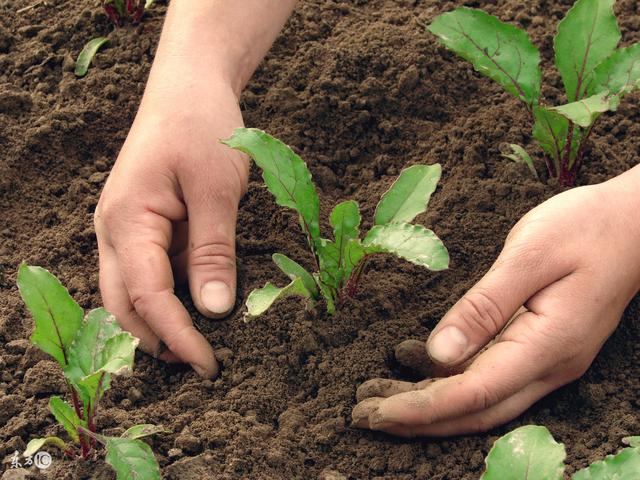
(2) sowing method: there are two ways: direct seeding and seedling transplanting. Direct seeding has the advantage of convenient field management, and it is widely used in production at present. However, this method uses a large amount of seeds and grows unevenly, which affects the quality of commodities and mining. Seedling transplanting can save land, after transplanting, the plant grows healthily, the rhizome grows neatly, it is easy to harvest, and the commodity quality is good, the yield is high, and its application in production has gradually increased in recent years. ① live broadcast: generally use hole broadcast or strip broadcast, but also broadcast. Hole sowing on the planting border surface according to the row spacing of 33 cm × 27 cm open shallow holes, each hole sowed 5 seeds, covering soil thickness 2 cm, mu seed consumption 1 Mu 1.5 kg; strip sowing in the border surface according to row spacing 45 cm, ditch depth 3 cm, seeds and plant ash, human feces and urine mixed well, evenly sprinkled into the ditch, covered with fine soil 1 cm, slightly compacted, the amount of seeds per mu was about 2 kg. ② seedling transplanting: open a horizontal ditch on the border surface of the seedling field according to the row spacing of 20cm, ditch depth 3 cm, sowing width 10 cm, mix seeds with plant ash and sow evenly into the ditch, cover soil 2 cm thick, slightly suppress, water thoroughly, cover grass on the border to keep warm and moisturize. When the temperature is 14 ℃ and the humidity is suitable, the seedlings can emerge in about 10 days, and the seed consumption per mu is 10 Mu and 15 kg. When raising seedlings in spring, in order to raise temperature and preserve soil moisture, it is best to raise seedlings with plastic film in a small bow shed and cover with grass curtain to keep warm when the temperature is low. After the seedlings are unearthed in summer, in order to prevent the sun and maintain the humidity of the seedling bed, it is necessary to set up a shed curtain or shade with a black net, and the shade degree should be about 50%. On rainy days and at night, the shade curtain should be removed to make the seedlings receive dew.
After the seedlings are unearthed, the field management should be strengthened, weeds should be removed in time, and the dense and thin seedlings should be pulled out in time. When the seedling is 15cm long and the root is 15cm long, it can be transplanted. It is best to separate the big and small seedlings before transplanting, in order to prevent the big seedlings from bullying the small ones, then open holes according to the row spacing of 20ml 24cm and the plant spacing of 12cm, and plant two seedlings per hole. After the main root is injured, it is easy to form Astragalus membranaceus, affecting the quality of the commodity. When planting, the whole root should be dug out, do not hurt the root, so that the root unfolds naturally, should not be bent, return to the soil and compacted. Transplanting should be carried out in the afternoon and evening on cloudy or sunny days, and the survival rate of transplanting is higher after rain. After transplanting or planting, the seedlings should be irrigated or sprayed immediately to facilitate survival. Generally, about 20,000 seedlings are planted per mu.
III. Field management
1. Interseedling, fixed seedling, supplementary seedling:
No matter it is direct seeding or raising seedlings, after the seedlings come out, the seedlings should be fixed between the rows. The seedlings should be early to avoid crowding and shading each other and competing for fertilizer and water. Generally, Astragalus membranaceus seedlings were carried out 3 times, the first time when the seedling height was 6 cm, and the second time when the seedling height was 10 mi 12 cm, and then the seedlings were fixed. There are 4 seedlings per hole sown in holes, 1 strong seedling every 10 meters 12 cm in strip sowing, and 1 strong seedling every 2 mi 3 cm (the large seedlings can be transplanted and the small seedlings can continue to grow), and the weak seedlings, small seedlings and diseased seedlings can be eliminated. When fixing seedlings, if there is a lack of seedlings, replanting should be carried out in the afternoon or evening on cloudy or sunny days. Seedlings can be cultivated in advance or selected from seedlings from time to time. Pay attention to watering after planting. The replanted seedlings have many branches, so when there are too many missing seedlings, it is best to reseed with the seeds that have been promoted to sprout.
Radix Astragali was treated with root, and its yield was composed of root weight per plant and number of plants per unit area. The cultivation practice in recent years shows that proper close planting can increase the leaf area index and the yield of Astragalus membranaceus, but the root weight and the quality of Astragalus membranaceus are decreased. Comprehensively, the planting density of Astragalus membranaceus per mu should be about 18000-20 000 plants. Good conditions of fertilizer and water, fertile soil, adequate nutrients can be properly close planting; poor conditions of fertilizer and water, lack of nutrients should be sparse.
2. Ploughing and weeding:
The growth of astragalus seedlings is slow, and the seedlings often grow after emergence. If you don't pay attention to it, it is easy to cause grass shortage, so weeds should be weeded in time. Weeding is generally combined with ploughing. Mid-tillage can loosen the soil, cut off the soil capillaries, prevent water evaporation, and play a role in preventing drought and preserving soil moisture. After heavy rain and long rain, ploughing plays a role in dispersing soil moisture and eliminating waterlogging. This is what the folk customs "hoe has water" and "hoe has fire" talk about. Mid-ploughing is generally carried out 4 times a year. The first intertillage and weeding was carried out when the seedling height was about 5 cm, the second intertillage was carried out when the seedling height was 7 mi 8 cm, and the third intertillage was carried out after the seedling was fixed, and then it was carried out according to the weeds in the field. After the second year, it will be ploughed once in April, June and September respectively. The depth of mid-tillage is generally carried out according to the principle of shallow seedling stage, deep adult plant, shallow seedling side and deep row, so that it does not hurt the seedling, bury the seedling, hurt the root and leave no grass. Hoe fine, hoe evenly, do not miss hoe.
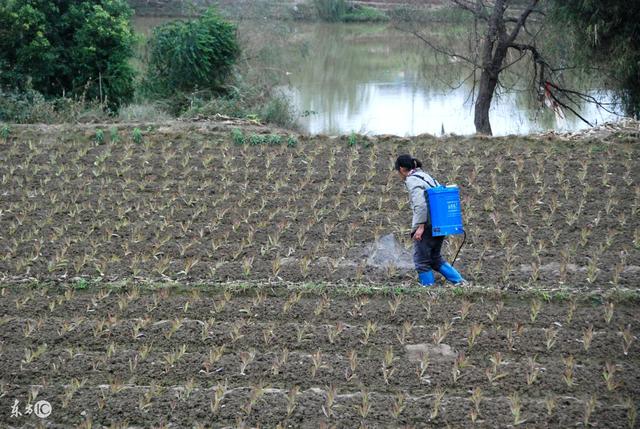
3. Topdressing:
Radix Astragali likes to be fat. In addition to applying sufficient basal fertilizer, in order to meet the nutrient needs of different growth stages and increase the yield, the first and second years of growth were combined with ploughing and weeding and topdressing 3 times a year. The first topdressing combined with the second intermediate ploughing and weeding should be applied lightly and partially, with more application of small seedlings and less application of large seedlings, so as to promote small seedlings to drive big seedlings and turn weak seedlings into strong seedlings, so as to achieve the goal of uniform, uniform and strong seedlings. Generally, 1000 kg of human feces and urine per mu or 15 kg of ammonium mixed with water. The second time combined with the third intermediate ploughing and weeding, 1500 kg of compost, 50 kg of calcium superphosphate and 10 kg of ammonium per mu were mixed evenly, and then ditched and applied, and then covered with soil. For the third time, after the seedlings withered in winter, 2000 kg of barnyard manure and 50kg of superphosphate and 150kg of cake fertilizer were mixed and applied to the field, and the soil was applied to prevent freezing.
4. Irrigation and drainage:
The water consumption of Astragalus membranaceus is low at seedling stage. In order to promote root rooting, increase root length and increase astragalus yield, sowing with sufficient moisture can not be watered. If the soil moisture is insufficient and the weather is dry, use small water or interlaced irrigation, do not flood irrigation. In the fruiting seed ripening period, in case of high temperature and drought, we should also irrigate the seeds in time to promote the seeds to mature normally, reduce the hard seed rate and improve the seed quality. Excessive soil moisture in the rainy season will lead to root decay. Plots prone to stagnant water should pay attention to timely drainage and reduce soil moisture in order to facilitate the normal growth of roots.
5. Topping and budding can break the growth advantage of the top of the main stem, inhibit the plant height of astragalus, control the plant growth above ground, reduce nutrient consumption, promote root growth, and increase the yield of astragalus, which is an important part of high-yield cultivation of astragalus. According to production, the yield can be increased by about 15.4%.
Buds are usually removed when buds appear in mid-June, usually 4 times a year. Topping should be "timely". Topping too early will affect the growth of the aboveground part, reduce the leaf area coefficient and affect photosynthesis. If we reduce the output and hit the top too late, it will not play its due role. According to the growth and development characteristics of Radix Astragali, the timely topping time should be in late July.
6. Overwintering management:
Astragalus membranaceus is a perennial plant, which needs to go through 180,190 days from aboveground withering and root overwintering bud formation to turning green in the second year. Doing well the management of this stage is very important to the growth and development of Astragalus membranaceus in the second year. Necessary measures should be taken in production to do a good job in the overwintering management of Astragalus membranaceus.
(1) cleaning up the countryside: after the aboveground parts of Astragalus withered before winter, the withered branches and leaves should be removed in time, and concentrated burning or composting should be concentrated to eliminate the source of overwintering diseases and insect pests and reduce the occurrence of diseases and insect pests in the following year.
(2) fertilization and soil cultivation: after withering seedlings in winter, 2000 kg of rotten barnyard manure, 50 kg of superphosphate and 150kg of cake fertilizer per mu are mixed and spread flat on the root, and then dig the trench deeply and cover the ditch mud with fertilizer to prevent the root from freezing.
(3) Anti-freezing by irrigation: because of the large specific heat of water, irrigation can increase the heat capacity of soil and has a certain anti-freezing effect. Irrigation should be done once before the Beginning of Winter.
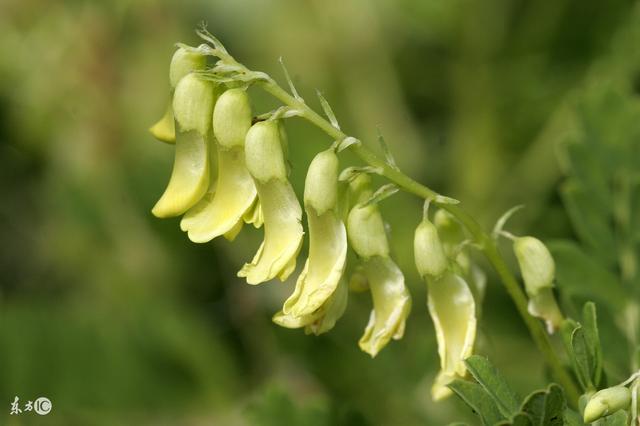
7. Timely harvest:
Astragalus can be harvested in the third year. If the harvest is too early, the quality of Astragalus membranaceus is poor; if it is not harvested for a long time, it is easy to get black heart or Lignification. Harvesting is generally carried out in autumn when the plant is withered, and can also be carried out before germination in the following spring, so the root growth is sufficient, the content of accumulated active components is high, and the yield of Radix Astragali is high. When harvesting, we should dig deeply, do not hurt the root, prevent the main root from being cut off, and affect the yield and quality of medicinal materials. In the rainy areas of the south, in order to reduce the loss of rotten roots, it is best to harvest in that year.
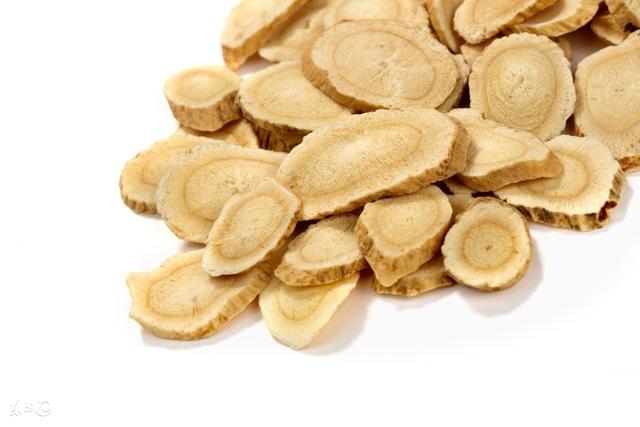
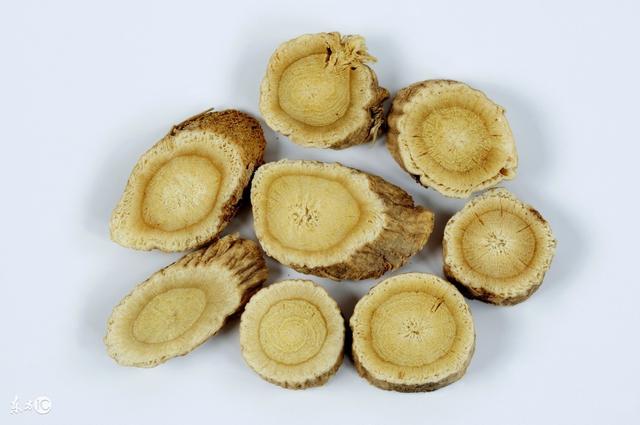
- Prev
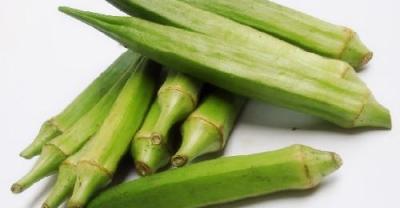
Strawberry planting pattern display
this kind of mode cost is higher, cannot popularize temporarily! Pay attention to [greenhouse horticulture technology] to serve modern and efficient agriculture. For more three-dimensional cultivation of strawberries, please.
- Next

Cultivation method of potted wolfberry
Lycium barbarum is a perennial woody plant that can be used for soup and soaking water. It has the effect of strengthening immunity, soothing liver and improving eyesight. Its leaves can also cook, taste...
Related
- Fuxing push coffee new agricultural production and marketing class: lack of small-scale processing plants
- Jujube rice field leisure farm deep ploughing Yilan for five years to create a space for organic food and play
- Nongyu Farm-A trial of organic papaya for brave women with advanced technology
- Four points for attention in the prevention and control of diseases and insect pests of edible fungi
- How to add nutrient solution to Edible Fungi
- Is there any good way to control edible fungus mites?
- Open Inoculation Technology of Edible Fungi
- Is there any clever way to use fertilizer for edible fungus in winter?
- What agents are used to kill the pathogens of edible fungi in the mushroom shed?
- Rapid drying of Edible Fungi

